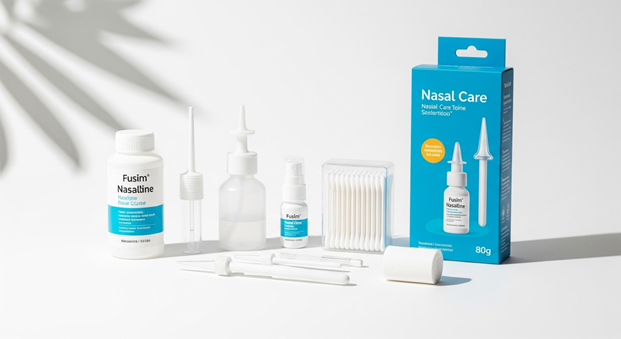You know the feeling. That pressure behind your eyes. The kind that makes your whole face feel heavy. When your nose stays blocked, even breathing becomes work. That’s when you reach for a nasal spray for sinus hoping for fast relief.
But sometimes, it doesn’t work. You spray, wait, and still feel stuffed. Maybe the spray just trickles down your throat. Maybe nothing changes at all. It’s frustrating. But it doesn’t have to be that way.
There’s a right way to use your spray. And when you follow a few simple steps, it can work every single time.
Know What’s in the Bottle Before You Use It
Not all sprays are the same. Before you use anything, check the label. Each type works differently.
There are three main kinds:
- Saline sprays: These help rinse and soothe your nose. You can use them every day.
- Decongestant sprays: These reduce swelling quickly but shouldn’t be used more than a few days in a row.
Steroid sprays: These lower inflammation over time. They’re often used for allergies or long-term sinus issues.
If you’re looking for fast relief, a nose spray for blocked sinuses might help. But choosing the right one depends on what’s causing your symptoms. That one detail makes all the difference.
Don’t Spray Straight Up—Change the Angle
Most people get the angle wrong. They tilt their head back and spray upward.
Here’s how to do it better:
- Keep your head straight or lean it forward just a bit.
- Place the nozzle in one nostril and aim it slightly outward.
- Close the other nostril.
- Spray while breathing in gently.
- Repeat on the other side.
Blow Your Nose First or Waste the Spray
A blocked nose means the spray won’t go far. It can’t work if it can’t get in. That’s why a simple nose blow before spraying is a must.
Want better results? Try rinsing first. A natural nasal irrigation system helps wash out dirt, mucus, and allergens. Using a saline nasal rinse Singapore product before spraying makes a big difference. It clears the way so the spray reaches deeper.
Stick to the Routine or Lose the Results
Sprays work best when you use them regularly. Skipping days or forgetting breaks the cycle.
Steroid sprays need time. You won’t feel better right away. But with daily use, they help reduce swelling and pressure. Even simple saline sprays are more helpful when they’re part of your daily routine.
To make it stick, use it at the same time every day. Also, don’t stop just because you feel better.
If results aren’t showing up, take a step back and look at your habits. Your nasal spray for sinus depends on steady use to do its job well.
More Isn’t Better—Spray Too Much and It Backfires
It’s easy to think that more spray means faster results. But that’s not how it works.
Using decongestant sprays for too many days in a row can cause rebound congestion. That means your nose may start getting stuffier, not better.
If you’re reaching for a sinus congestion relief spray too often, it’s time to change your plan. Talk to a doctor or switch to something gentler like saline or a steroid-based option. Using less could help you feel better longer.
Keep It Clean and Store It Right
Where and how you store your spray matters. Heat, light, and moisture can break it down over time. And a dirty nozzle can carry bacteria back into your nose.
Follow these simple tips:
- Store your spray in a cool, dry place.
- Clean the nozzle after every use.
- Never share your spray with others.
If you use a nasal cleaner for sinusitis, treat it like a medical tool. It should be clean and used correctly every time.
Your Air Matters—Fix the Environment Around You
Even the best spray won’t help if your surroundings keep irritating your sinuses. Dry air, dust, pet dander, and mould can keep your nose blocked.
Try these changes: wash your pillowcases weekly and keep your space clean and well-ventilated.
These simple steps help your spray work better. Relief lasts longer when your space supports healing.
Still Stuck? It Might Be More Than a Spray Can Fix
If nothing seems to help, even after following all the steps, your problem might be deeper. You could have nasal polyps, long-term sinus infections, or even a bent nasal passage. These issues can block airflow and stop any spray from reaching where it needs to go.
When symptoms don’t improve, talk to a doctor. You may need a treatment plan that goes beyond over-the-counter help.
The Final Spray—Make It Count Every Time
Once you know how to use a nasal spray for sinus, it becomes something more than just a quick fix. You understand when to use it, how to spray it, and what helps it work best. That knowledge brings real relief.

